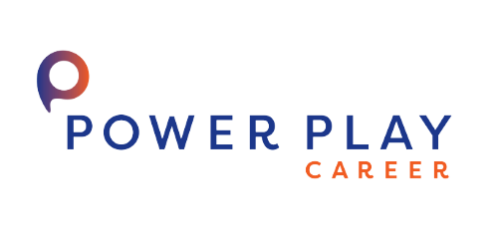
Last week, my blog was about identifying your transferable skills.
I received a great question, so I decided to respond and write about it this week.
This is a great article about transferable skills and their importance in today’s rapidly changing job market. It’s important to be aware of both your hard and soft skills and to find careers where you can utilize them. One question to consider after reading this article is, “What steps can I take to identify and showcase my transferable skills to potential employers?” – Jenyse
For those who did last week’s exercise and are marvelling at your list, you might wonder, like Jenyse, “Okay, Joanne, what do I do with this list?” The answer is to write examples, stories and accomplishments for each skill. Let me show you how to write your accomplishments.
Since you wrote down what you believe are your skills, what is your proof? What proof do you have in your professional experience that you have these skills? Hard skills are easy; you can produce your diploma or certificate or account for your years of experience.
Soft skills are more challenging to define. Sometimes, people compliment you on your creativity, analytical, or time-management skills. You shrug it off with the belief that your strengths, which you have demonstrated for years because “it’s your job,” must be shared by everyone. Being self-aware helps you realize that these comments are clues about your strengths that may be your passions.
What if you included time management as one of your skills? When we are good at something that comes naturally, it is challenging to consider an example. For clues, review how efficiently you manage numerous tasks in a day.

“Everyone has unique gifts and talents. What you love is what you’re gifted at. To be completely happy, to live a completely fulfilled life, you have to do what you love.” – Barbara Sher
With your list, you can write accomplishment statements or create bullets in your resume. Here is an example of a statement initially written in a weak form and then rewritten into a stronger statement. So, if one of your strengths is coaching:
Weak:
Coached new employees.
Basic:
Coached new employees, resulting in increased customer satisfaction.
Strong:
Coached more than 15 new employees over six months, increasing customer satisfaction.
Excellent:
Increased reported customer satisfaction rate by 20 percent by providing effective coaching for more than 15 new employees in six months.
In a resume, you can alternate between basic and excellent statements.
Getting ready for an interview?
Create your story using the STAR framework for each soft skill by writing a sentence for each point.
Situation: This task is similar to the framework for creating a story. It involves the What, When, and Where of a situation, which can be positive or negative.
Task/Problem: You helped your team meet a deadline or resolve a conflict. Describe your responsibility for this task in detail.
Action: Describing the action can be more than one sentence since it is relevant to your story. How did you complete the task? What steps did you take from start to finish?
Result: People often overlook noting the outcome of their action, which is the conclusion of your story and will make the most significant impact. How did you complete or meet the challenge, task, or problem? What did you accomplish or learn from the challenge? Giving numbers, in some instances, will provide a clear picture and make your results quantifiable.
Everybody loves hearing a great story, even in an interview, and always include the POSITIVE result. Here is an example: “I worked as part of a team (Situation) to transform a disorganized, inefficient warehouse (Task/Problem) into a smooth-running operation by totally redesigning the layout (Action); this action saved the company $250,000 in recovered stock (Results).”
SWOT Analysis
Use this Career Planning and development tool, SWOT (Strengths, Weaknesses, Opportunities, Threats), to help you focus on your strengths, minimize weaknesses, and take every possible advantage of available opportunities while considering threats.
STRENGTHS (internal)
- Hard skills and work experience
- Education, training
- Soft Skills
- Personality (creative, ability to work under pressure, work ethic, optimism, energy)
- Network
- Professional organizations/memberships
WEAKNESSES (internal)
- Negative habits that you can improve
- Lack of work experience
- Lack of self-knowledge/specific job knowledge
- No technical knowledge
- Minimal soft skills
- Job-hunting
- Negative characteristics (shy, emotional)
OPPORTUNITIES (external)
- Trends in your field
- Fields in need of your skill set
- Advancement
- Professional Development
- Strong Network
- Transferable skills
THREATS (external)
- Negative trends in your field
- Competition
- Competitors with better job-hunting and interviewing skills
- Companies are not hiring people with your education
Further to the SWOT tool, the SWOT analysis is another step to help you understand yourself, your career, and your future. Who do you want to be? By asking yourself questions, you know where you are now and identify the next steps for where you want to go. Do you need to change jobs? Go into a different field? Industry? Go back to school? Take training? It helps to develop a strategy that is uniquely yours. Also, you will likely go for the priorities that align with your strengths.
Engage your family and friends to discuss your analysis for their objective opinions.
Summary
Self-awareness can go a long way. Once you know the things you do well, you can recognize the opportunities that allow you to do more of what draws on your strengths. Additionally, knowing your shortcomings means you can find ways to close the gaps in your identified skills and strategize how to increase your knowledge, whether taking a class or changing your approach to assignments.
“Don’t be confused between what people say you are
and who you know you are.”
– Oprah
Let me know
Give it a try, and let me know about your experience in the comments below.
You can also email me at joanne@powerplaycareer.com. I would love to hear the outcome of how you did, and what steps you took. What did you think of the SWOT analysis? Any other topics you would like me to address?

You can schedule a call at Book Your Coffee Chat.
To get more of this type of content, sign-up for my newsletter at www.joannesavoiemalone.com and get my free guide: My TWO-STEP Process to help you Ace your next Interview.
Until next week,
I remain your sounding board.
Joanne Savoie-Malone


